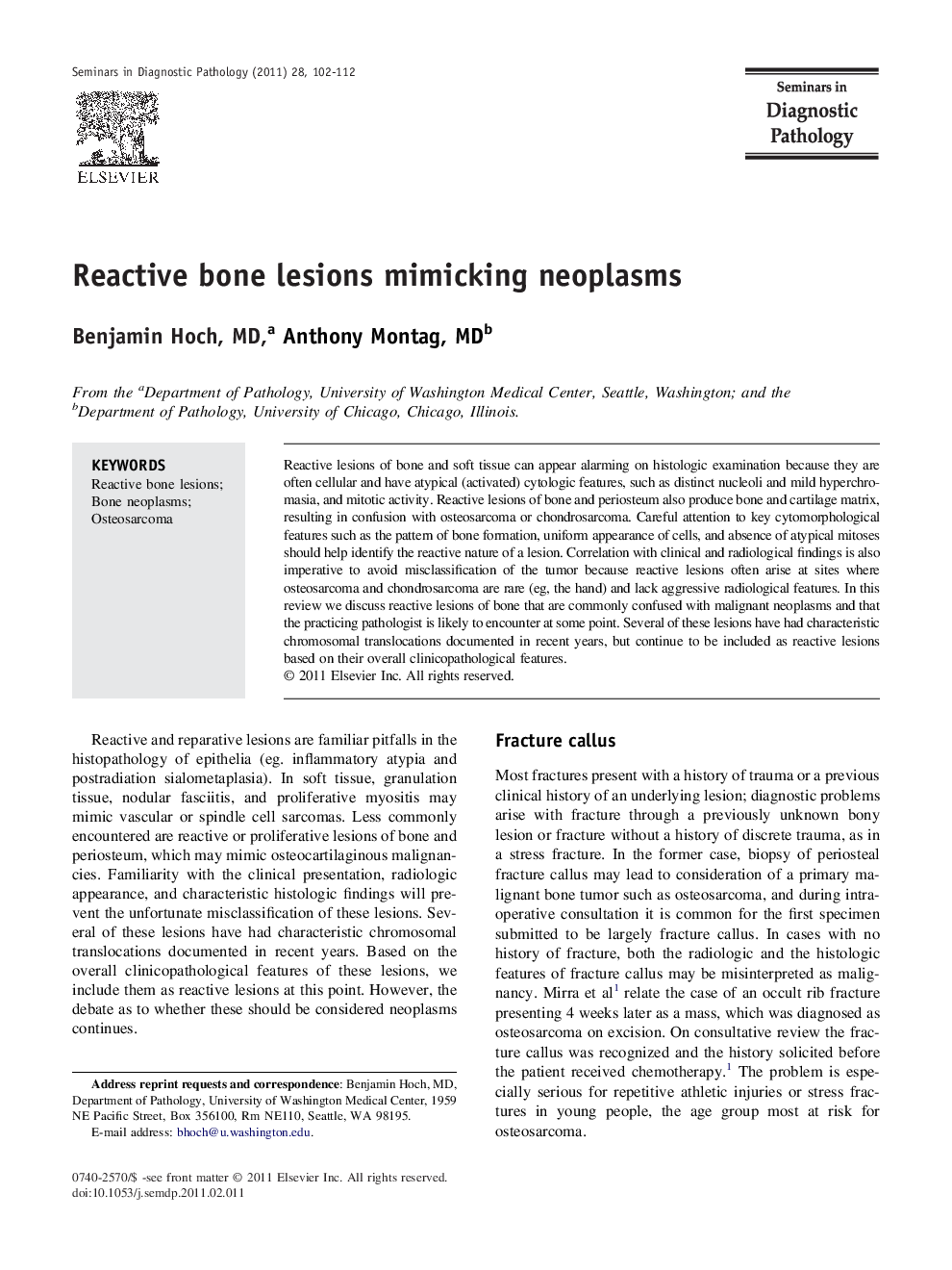| Article ID | Journal | Published Year | Pages | File Type |
|---|---|---|---|---|
| 4138736 | Seminars in Diagnostic Pathology | 2011 | 11 Pages |
Reactive lesions of bone and soft tissue can appear alarming on histologic examination because they are often cellular and have atypical (activated) cytologic features, such as distinct nucleoli and mild hyperchromasia, and mitotic activity. Reactive lesions of bone and periosteum also produce bone and cartilage matrix, resulting in confusion with osteosarcoma or chondrosarcoma. Careful attention to key cytomorphological features such as the pattern of bone formation, uniform appearance of cells, and absence of atypical mitoses should help identify the reactive nature of a lesion. Correlation with clinical and radiological findings is also imperative to avoid misclassification of the tumor because reactive lesions often arise at sites where osteosarcoma and chondrosarcoma are rare (eg, the hand) and lack aggressive radiological features. In this review we discuss reactive lesions of bone that are commonly confused with malignant neoplasms and that the practicing pathologist is likely to encounter at some point. Several of these lesions have had characteristic chromosomal translocations documented in recent years, but continue to be included as reactive lesions based on their overall clinicopathological features.
